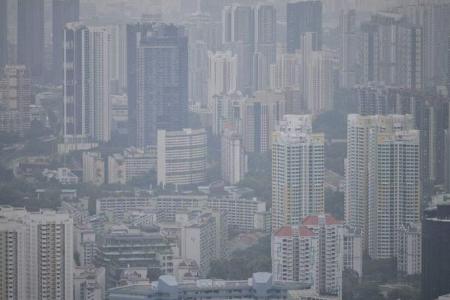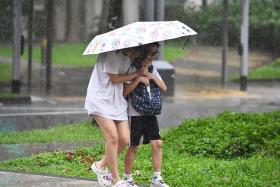Prepare N95 masks, air purifiers as haze may hit S’pore from June
Members of the public are advised to ensure that they have sufficient N95 face masks and air purifiers in good working condition as there is a higher risk of transboundary haze hitting Singapore from June due to drier and warmer weather conditions.
The Meteorological Service Singapore (MSS) said in a press release on Tuesday that in anticipation of the onset of drier weather, the government inter-agency haze task force has been coordinating action plans for possible haze.
While the period between June and September is the usual dry season for Singapore and the surrounding region, two climate phenomena – El Nino conditions and the positive Indian Ocean Dipole – could lead to a more intense and prolonged dry season this year, even extending into October, said MSS.
El Nino is a naturally occurring climate pattern associated with changes in both the ocean and atmosphere in the equatorial Pacific Ocean, and is set to bring hotter and drier weather to South-east Asia and Australia.
The positive Indian Ocean Dipole causes warmer sea surface temperatures in the western Indian Ocean.
“Drier and warmer conditions are conducive to the development of peatland and vegetation fires. Therefore, hotspots could escalate from June 2023 under extended periods of drier weather, particularly in fire prone areas,” said MSS.
“This will increase the risk of transboundary haze affecting Singapore if fires develop in close proximity and prevailing south-easterly to south-westerly winds blow smoke haze from the fires towards Singapore,” added MSS.
MSS will continue to closely monitor the development of El Nino and Indian Ocean Dipole, as well as the regional weather and haze situation, and provide updates when necessary.
When a haze episode is imminent, the National Environment Agency (NEA) will provide haze forecasts through the NEA website (www.nea.gov.sg), the myENV mobile app and the haze microsite (www.haze.gov.sg).
MSS said that there is up to an 80 per cent chance of an El Nino event developing this year, with signs that indicate conditions developing in the next few months.
“At this stage, there is no indication of the strength and duration of the El Nino, if it develops. Should a strong El Nino set in, well below average rainfall and warmer temperatures can be expected during the coming south-west monsoon season,” said MSS.
The south-west monsoon season is from June to September.
MSS added that El Nino events tend to have the biggest influence on Singapore’s rainfall during the south-west monsoon season, with rainfall up to 45 per cent below average.
During the last strong El Nino event in 2015 and 2016, Singapore’s total rainfall from June to September 2015 was about 35 per cent below the long-term average.
El Nino events also bring higher temperatures to Singapore, with the warmest temperatures often occurring when such events weaken typically in March to April the year after the start of the event.
During the 2015 and 2016 El Nino event, Singapore’s average temperature over the June to September 2015 period was 28.8 deg C, or 0.6 deg C above its long-term average for that period.
From March to April 2016, Singapore’s average temperature was 29.2 deg C or 1.2 deg C above its long-term average for that period.
The years 2016 and 2019 are Singapore’s hottest on record.
Get The New Paper on your phone with the free TNP app. Download from the Apple App Store or Google Play Store now


